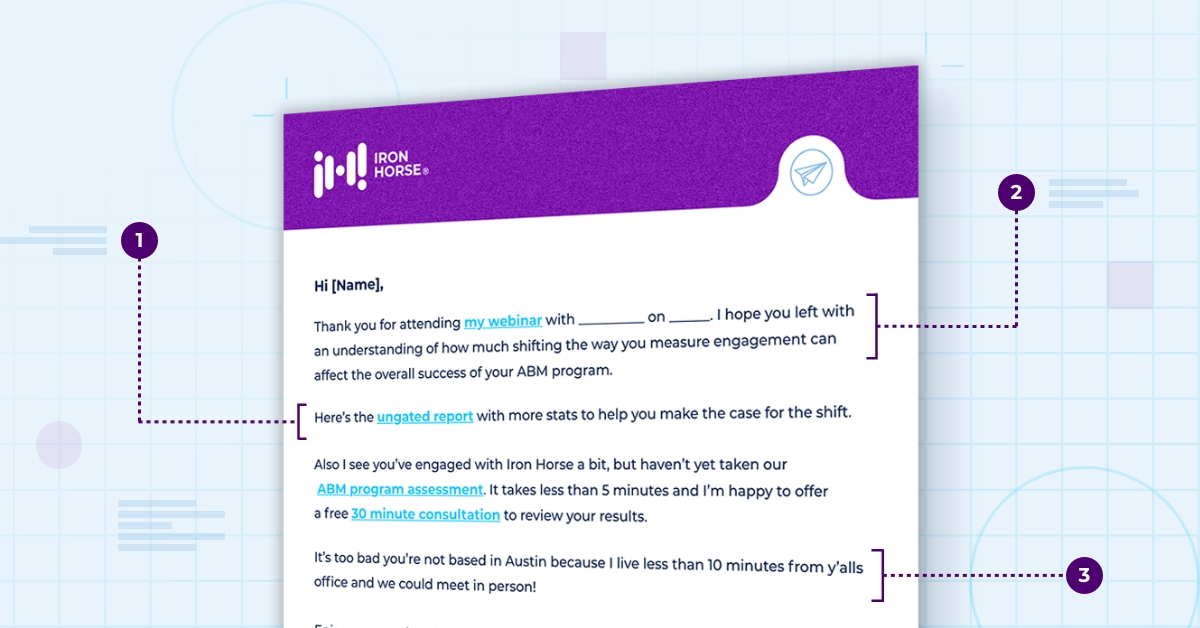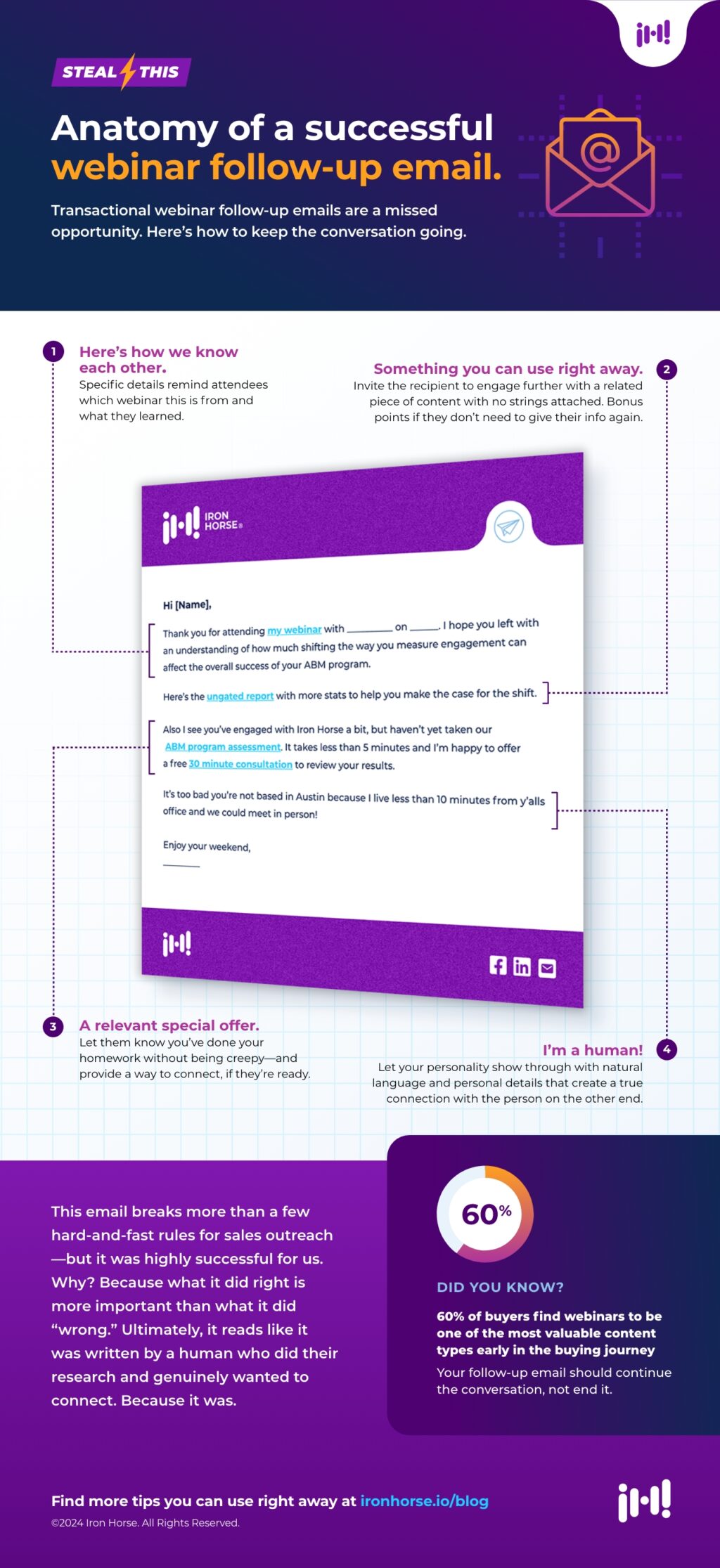Blog

Most webinar follow-up emails are the same. A link to the replay and maybe a takeaway or two. These transactional emails do what they’re supposed to—make it easy for registrants to (re)watch the webinar and share it with their colleagues.
But they’re a missed opportunity to continue the conversation with an engaged audience.
Here’s a way to do it differently. The email below is an example of a personalized follow-up written by one of the speakers, one of our expert growth marketing consultants. It breaks a few B2B email rules. But it was highly successful for us. Jump down for a deeper dive into why.

Why should you change your webinar follow-up email strategy?
For a highly engaged registrant who attends the live webinar (or plans to watch the replay in short order), functional webinar follow-up emails do the trick. They provide the necessary information with no frills. They serve the self-serve buying journey. That’s all great—but what you really want is to continue the conversation. And that’s where they fall short. Here’s why.
Lag time between webinar registration and viewing.
According to Netline, the consumption gap—or the time between when someone downloads a piece of content and when they consume it—widened to 31.2 hours in 2023. Also consider that 46% of webinar viewers only watch the replay. (That’s 46% of viewers, not registrants. Increasing the chance that registrants will attend is another story—all about making those post-registration emails richer and less transactional as well.) A personalized follow-up creates a connection with your company even when content consumption is sporadic.
The relationship with your company may be just beginning.
If you’re using webinars as a lead generation activity, then a good percentage of your registrants probably don’t know much about you. If they came over from a partner, content syndication, or a larger virtual event, they may not have any idea who you are. When that generic post-event email comes through (“Thanks for attending” — what did I attend?) they may not even open it, and if they do, it’ll likely go right into the file of a million open tabs never to return to. (Think about your own behavior. Ring true?)
Webinars engage buyers. You should be capitalizing on that.
According to Demand Gen Report’s 2024 Content Preferences Benchmarks Survey, 65% of respondents named webinars/digital events as the format they found most valuable in their decision-making process. And, in response to TechTarget’s 2024 Media Consumption Survey, 66% of buyers said they are more likely to watch or download a tech vendor’s additional content or read their white papers and case studies after watching an effective webinar or video. If you’re not actively trying to nurture that relationship (and I don’t mean by dropping registrants into your newsletter list), you’re missing an opportunity to accelerate the journey.
Why this webinar follow-up email worked.
No, this email doesn’t follow all of the “best practices” of sales outreach—but it still worked. Why? Because what it did right is more important than what it did “wrong.” Ultimately, it reads like it was written by a human who did their research and genuinely wanted to connect. Because it was.
Rather than thinking of this email as a template, use it as inspiration to create your own messages comprised of these parts:
Reminder of what they learned.
Your webinar may be one of dozens of pieces of content consumed by the recipient that week. Help them connect the positive experience they had on Tuesday with this message in their inbox on Thursday by including specific details.
Tip: Rather than restating the takeaways from your promo materials, remind them of the problem the webinar helped solve. A quote, stat, or answer to a question from the chat works great here, too. When sending to registrants who didn’t attend, this can encourage and accelerate watching the replay. When referencing a certain part of the webinar, make sure to include the timestamp for a better user experience.
Related content.
The main goal of your webinar follow-up email, especially for buyers that are in the early stages of the journey, should be to encourage repeat engagement with your company’s content.
Tip: Think about the end state for attendees. What questions will have been answered and what questions will they have now? Then provide a content piece that answers them.
A way to connect.
Just because most attendees won’t be ready to talk to your biz dev team doesn’t mean you shouldn’t give them the opportunity to do so. In this case, the author combined a second content offer with an opportunity for a free, personalized consultation on their marketing strategy.
Truly human elements.
This is not personalization at scale. It’s targeted outreach to high-value prospects. You’re creating a relationship—and that requires a human being on both sides. The email author’s personality comes through—letting the reader know they are really interested and giving them a sense of what to expect when working with us.
Was this helpful? Find more demand gen practices you can use right away at the Iron Horse blog.
Subscribe to our blog.
Get unstuck with the most interesting business ideas and our insights delivered to your inbox.